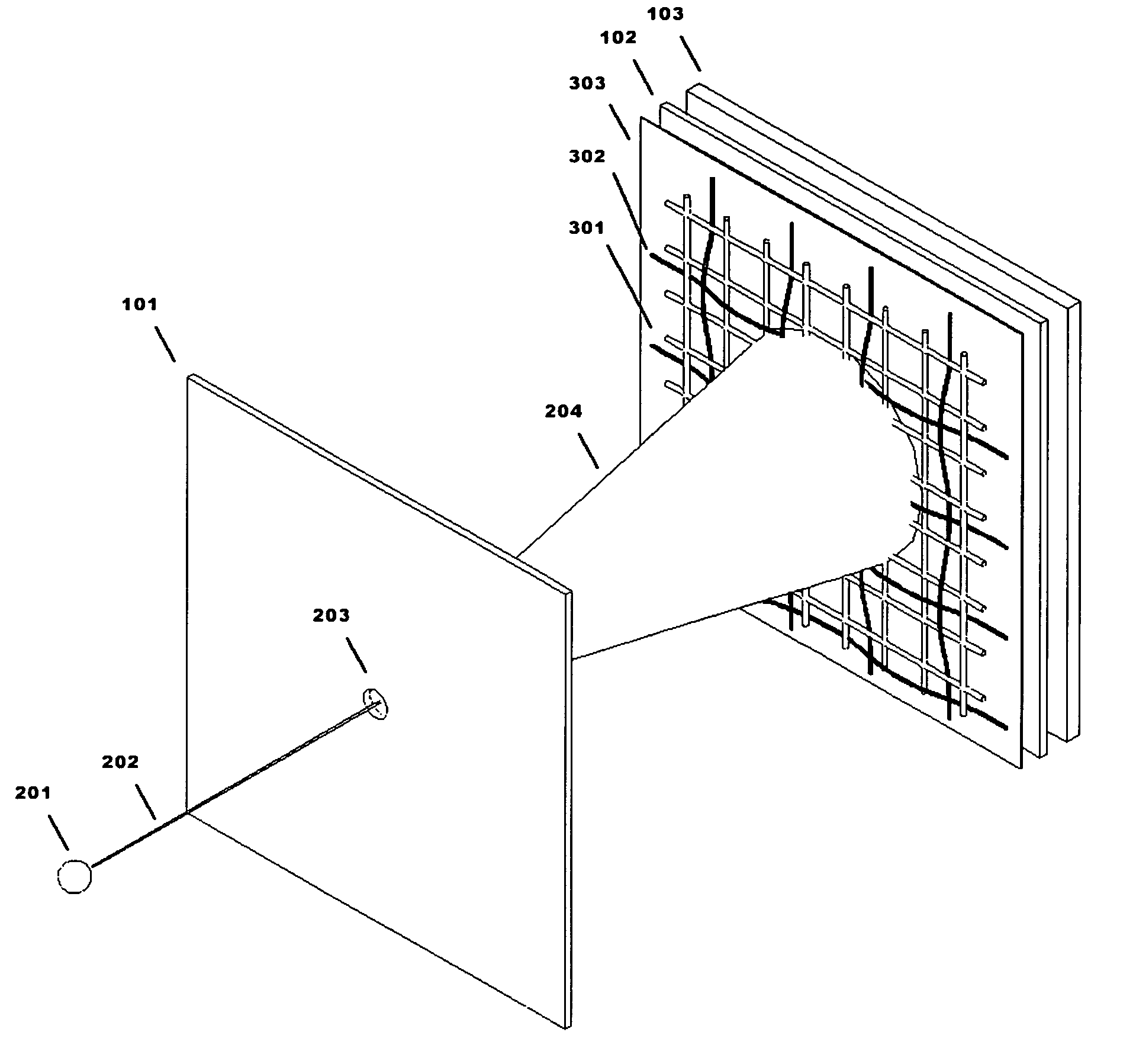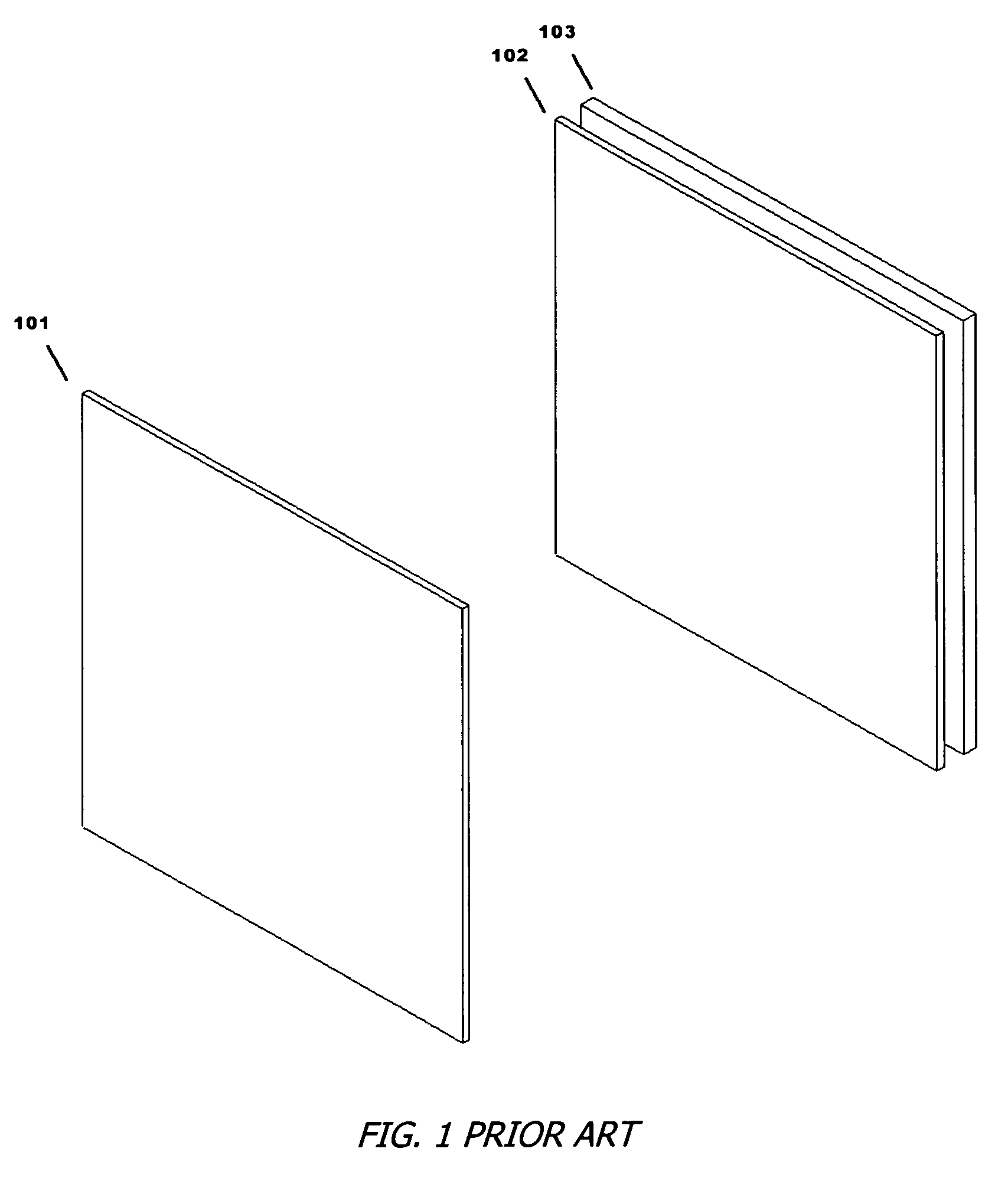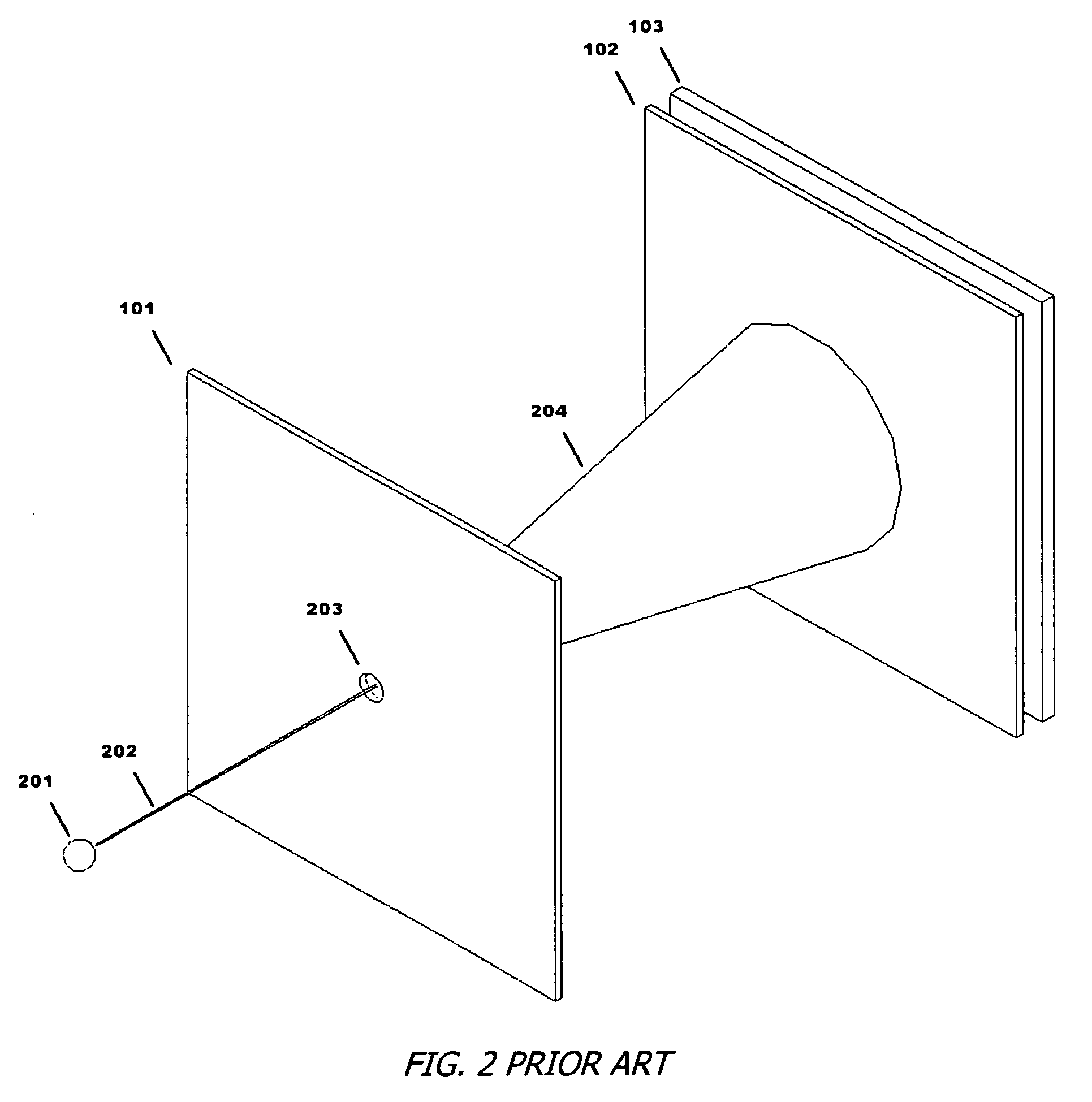Fiber optic impact detection system
a sensor system and fiber optic technology, applied in the direction of optical radiation measurement, force/torque/work measurement apparatus, instruments, etc., can solve the problems of the inability to use a system, and the inability to detect the location of a mod, etc., to achieve the effect of easy adaptation to existing structures, low weight and cost effectiveness
- Summary
- Abstract
- Description
- Claims
- Application Information
AI Technical Summary
Benefits of technology
Problems solved by technology
Method used
Image
Examples
Embodiment Construction
[0033]A preferred embodiment and its use will be set forth in detail with reference to the drawings, in which like reference numerals refer to like elements throughout.
[0034]Referring to FIG. 1, a section of the typical structure used in spacecraft and other vehicle construction is shown. The structure is comprised of a first surface that acts as a bumper shield 101, an energy absorbing layer 102 made of multiple plies of a material such as those sold under the trade names Nextel® or Kevlar®, and a second surface 103 that acts as the structural and pressure vessel wall.
[0035]Referring to FIG. 2, when a high energy object or MOD particle 201 travels along a trajectory 202 and strikes the bumper shield 101, it creates an entry hole 203 with a diameter that is proportional to the diameter of the MOD particle 201. The primary cause for concern is not the entry hole 203, but the damage to the second surface 103 that is caused by the debris plume 204 as it strikes the energy absorbing lay...
PUM
 Login to View More
Login to View More Abstract
Description
Claims
Application Information
 Login to View More
Login to View More - R&D
- Intellectual Property
- Life Sciences
- Materials
- Tech Scout
- Unparalleled Data Quality
- Higher Quality Content
- 60% Fewer Hallucinations
Browse by: Latest US Patents, China's latest patents, Technical Efficacy Thesaurus, Application Domain, Technology Topic, Popular Technical Reports.
© 2025 PatSnap. All rights reserved.Legal|Privacy policy|Modern Slavery Act Transparency Statement|Sitemap|About US| Contact US: help@patsnap.com



